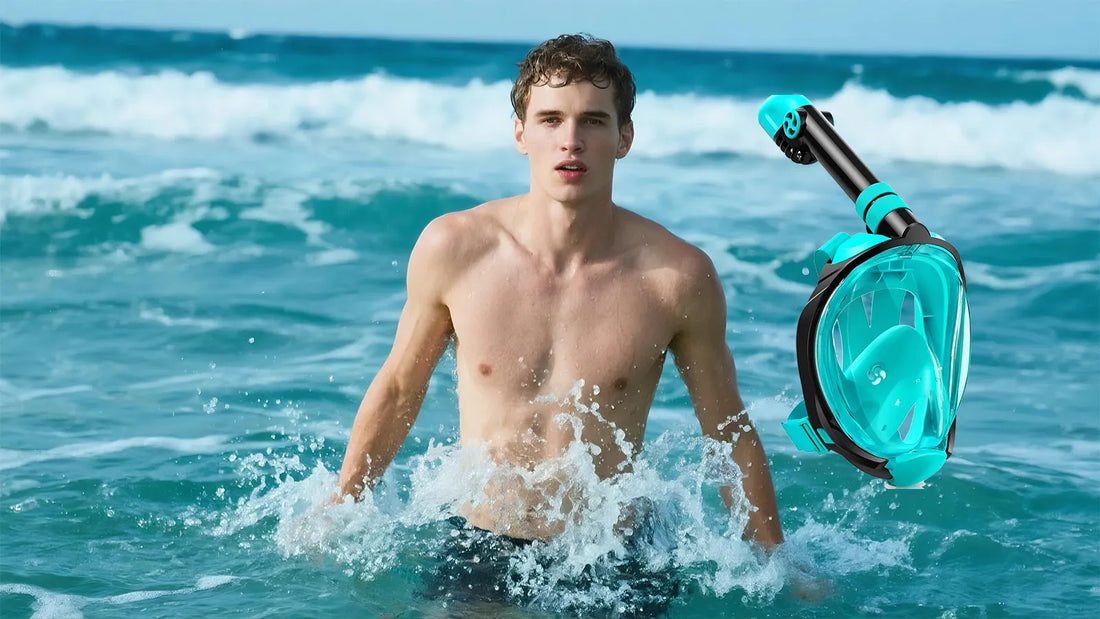Planning a tropical getaway and wondering if you can bring your snorkel gear on a plane? You're not alone. Many travelers dream of exploring vibrant coral reefs and underwater wonders but are unsure about the logistics of transporting their equipment. The good news is that bringing snorkel gear on a plane is generally allowed, but there are some important considerations to keep in mind. This guide will walk you through everything you need to know to ensure your snorkeling adventure starts off smoothly.
Understanding Airline Policies on Snorkel Gear
Before packing your snorkel gear, it's crucial to understand the policies of the airline you're flying with. Most airlines allow snorkel gear as part of your checked luggage or carry-on, but there are exceptions and specific rules you need to follow. For example, some airlines may have restrictions on the size or weight of your gear, while others might classify certain items differently. Always check the airline's official website or contact their customer service for the most accurate and up-to-date information.
Packing Snorkel Gear in Checked Luggage
If you prefer to pack your snorkel gear in checked luggage, there are a few tips to ensure it arrives safely. First, use a sturdy, waterproof bag to protect your gear from damage and moisture. Wrap your mask and snorkel in soft clothing or bubble wrap to prevent scratches. Fins can be bulky, so consider using a fin bag or placing them at the bottom of your suitcase to distribute weight evenly. Don't forget to secure any loose straps or buckles to avoid tangling.
Carrying Snorkel Gear as a Carry-On
For those who want to keep their snorkel gear close, carrying it as a carry-on is a viable option. However, be mindful of the size and weight restrictions for carry-on luggage. Most airlines allow a small bag or backpack for personal items, so choose a compact and lightweight snorkel set. Keep in mind that some items, like fins, may be too large for carry-on and will need to be checked. Always double-check the airline's carry-on policies to avoid any surprises at the gate.
Navigating Security Checkpoints with Snorkel Gear
When passing through airport security, your snorkel gear may be subject to additional screening. Be prepared to remove your mask, snorkel, and fins from your bag for inspection. To expedite the process, pack your gear in an organized manner and ensure it's easily accessible. If you're carrying any liquids, such as defogging solution, make sure they comply with the TSA's 3-1-1 rule for liquids in carry-on luggage.
Traveling with Snorkel Gear Internationally
If your snorkeling adventure takes you abroad, it's essential to research the customs and import regulations of your destination country. Some countries may have restrictions on certain types of snorkel gear or require additional documentation. Additionally, consider the climate and water conditions at your destination to ensure your gear is suitable. Packing a repair kit with essentials like spare straps and silicone grease can also be a lifesaver in case of unexpected issues.
Renting vs. Bringing Your Own Snorkel Gear
While bringing your own snorkel gear ensures familiarity and comfort, renting equipment at your destination can be a convenient alternative. Many snorkeling hotspots offer rental services with well-maintained gear. This option can save you the hassle of transporting heavy equipment and free up space in your luggage. However, if you have specific preferences or require specialized gear, bringing your own might be the better choice. Weigh the pros and cons based on your travel plans and personal needs.
Tips for Protecting Your Snorkel Gear During Travel
To keep your snorkel gear in top condition during your travels, follow these tips. Always rinse your gear with fresh water after each use to remove salt, sand, and debris. Allow it to dry completely before packing to prevent mold and mildew. Store your gear in a cool, dry place away from direct sunlight to avoid damage from UV rays. Regularly inspect your equipment for signs of wear and tear, and replace any damaged parts as needed.
Environmental Considerations for Snorkelers
As a snorkeler, it's important to be mindful of your impact on the environment. Avoid touching or standing on coral reefs, as they are fragile and easily damaged. Use reef-safe sunscreen to protect marine life from harmful chemicals. Participate in eco-friendly snorkeling tours that prioritize conservation and education. By practicing responsible snorkeling, you can help preserve the beauty of underwater ecosystems for future generations.
Traveling with snorkel gear doesn't have to be a daunting task. With the right preparation and knowledge, you can bring your gear on a plane without any hassle. Whether you choose to pack it in checked luggage or carry it on, following these tips will ensure your snorkeling adventure is smooth and enjoyable. So, pack your gear, book your flight, and get ready to dive into the wonders of the underwater world!

